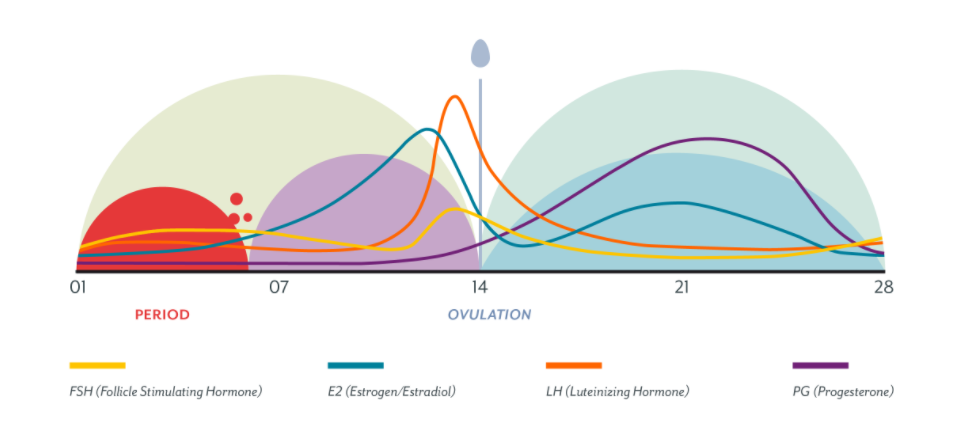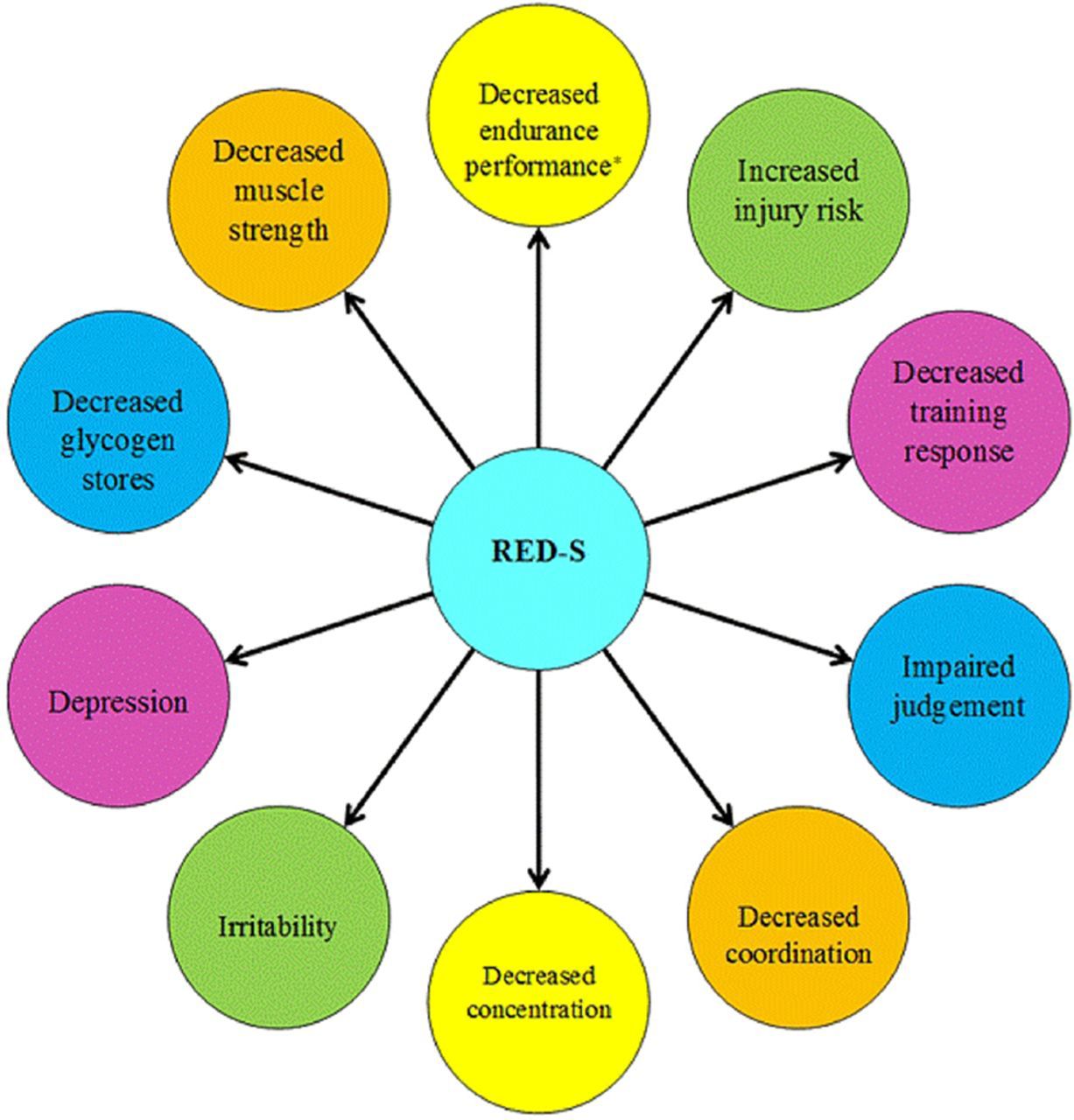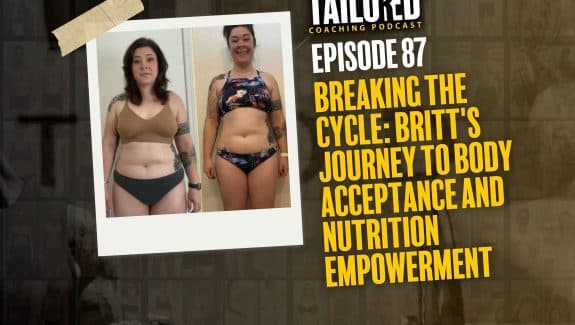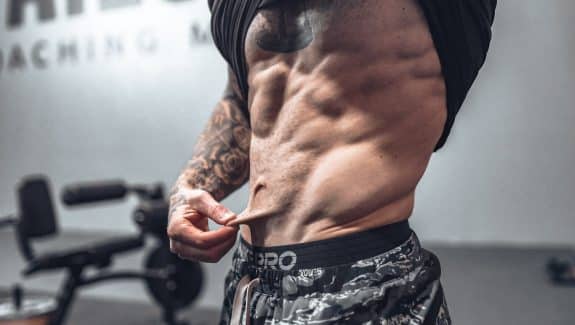When it comes to writing nutrition plans, we at TCM believe that everyone deserves an individualized approach.
So we already practice writing different nutrition protocols for each male and female client we work with, but what are those main differences for men and women?
Can foundational guidelines be applied across the board to both sexes? Do diet phases look the same? How does having a period affect training and nutrition?
These are exactly the types of questions that we’re going to dig into within this women’s health guide & FAQ.
This one goes out to all the ladies, but guys – keep reading! This guide contains very useful information for EVERYONE in the fitness & nutrition space so we can all better understand that women aren’t simply small men.1
**Disclaimer – this blog is meant to help you answer common questions related to nutrition & training for women and should NOT be taken as medical advice.
I feel terrible before my period – what can I do to manage PMS symptoms?
Before we dive too far into women’s health, here are some basics you should know about the menstrual cycle:
→ A normal menstrual cycle can range from about a 28 – 40 day cycle
→ The first part of the cycle is called the Follicular Phase
» This phase is day 1 of your menses through ovulation
» During this phase, estrogen rises slowly until luteinizing hormone (LH) and follicular stimulating hormone (FSH) peak, signifying ovulation
→ After ovulation comes the Luteal Phase
» This is the phase after ovulation when estrogen and progesterone are elevated
» If no egg is implanted in the uterus, progesterone and estrogen drop back down, and your next period starts the cycle over
→ See summary image below!

Image source: https://helloclue.com/articles/cycle-a-z/the-menstrual-cycle-more-than-just-the-period
There can be physical AND mental symptoms when your period starts due to the drop in estrogen and progesterone right before you bleed.
The fluctuation in hormones can cause lethargy, inflammation, and a redistribution of fluids in the body which may also cause the scale to climb (but remember this is from water, NOT fat).
One of the best ways to manage PMS symptoms is to simply listen to your body. This includes:
→ Getting adequate sleep (over 7 hours)
→ Managing stress to support your immune system and gut health
→ Removing inflammatory foods (sugar, wheat, processed vegetable oils, alcohol)
→ Staying consistent with your macros and micros
If you aren’t addressing the basics listed above, there’s no need for more advanced strategies.
Once you have those dialed in, supplementation may also be helpful to manage PMS symptoms. Magnesium and Zinc are two recommended supplements for women to take consistently.
As the uterine lining increases and thickens leading up to our periods, we have an increased uptake of Magnesium and Zinc. Adding supplementation can improve our body’s storage of these minerals.
Magnesium is also tied to muscle contraction and Zinc to the immune system, so together they help dampen inflammation caused by hormone changes around this time of the month.
Omega-3’s are another great supplement to add in because these fatty acids help us overcome the inflammation from the influx of estrogen as your period starts. This will help with cramping, bloating, and general fatigue.
It’s important to note that mild PMS symptoms are very different from Premenstrual Dysphoric Disorder (PMDD). PMDD is caused by a large drop in serotonin that causes anxiety and depression and should be treated with the help of a medical practitioner.
I lost my period, what should I do now?
Unfortunately, this is a very common question. An astounding 45% of athletic women don’t have their period or have very irregular cycle.1
The absence of menstruation when you have previously had a period (i.e. after puberty) is commonly called secondary amenorrhea, which is what I’ll be referring to here. This happens due to an energy imbalance in the body, or in other words, your body is in a Low Energy Availability state (LEA).
LEA may not always be from food restriction, but can also be caused by an increase in training volume leading to a higher calorie expenditure not being matched with increased calorie intake.
Amenorrhea is one of the three conditions that make up the Female Athlete Triad (the triple combination of amenorrhea, low energy availability, and decreased bone density) which has since been expanded into the term Relative Energy Deficiency in Sport (RED-S) to include all of the various health impacts of LEA.
Image credit to the British Journal of Sports Medicine
RED-S encompasses menstrual dysfunction, illness, decreased muscle protein synthesis, decreased bone density, higher inflammation, GI stress, and even psychological aspects.
Women living in a LEA state who develop amenorrhea will also see a downregulation in thyroid function and IGF-1 and will not be able to respond and adapt to training as well. This was recently proven in this study done on female swimmers. Amenorrheic swimmers actually got slower over 12 weeks of training compared to their teammates who had a regular menstrual cycle.
All of this explanation is to emphasize the fact that you will be at a disadvantage from a health AND performance perspective if you operate in a LEA state and lose your menstrual cycle.
If you are currently experiencing very irregular periods or amenorrhea, work with your doctor and your coach to find the root cause of the issue. Aim to rebalance your energy intake with your energy expenditure and ensure proper hormone health through testing. More details on amenorrhea in this blog.
Do I need to change my training depending on where I’m at in my menstrual cycle?
Let me start by saying that there is still very little research on female athletes so we don’t have concrete evidence that we can apply across the board. Furthermore, every woman’s cycle could be a little different and require different tweaks to their individual training routine.
For most women, there is no need to manipulate your workouts around your cycle. The best rule to live by is to listen to your body and know when you can push harder or when you need an extra rest day.
For some female athletes who love to geek out on training and nutrition or want to really dial in every aspect of their athletic endeavors, step one is tracking your cycle!
There are various apps to help you do this. I like Natural Cycles and FitRWoman.
After you track your cycle for a few months, you will be able to see how long your follicular and luteal phases are.
During the follicular phase, estrogen and progesterone are lower and this is where you can really push performance and strength output. Studies have shown women to build more lean mass and increase strength and power output during their follicular phase.2
Ideally, you would plan your highest intensity training and go for PR’s or test max lifts during this first phase of your cycle.
Your hormones rise after ovulation and you enter your luteal phase, which is when your body can’t utilize carbohydrates as well. We would recommend more steady state exercise, skill work, and movement technique in these days leading up to your period.
What about nutrition changes during my period?
There is no need to make any major changes to your nutrition as you move through your cycle, but there are a few tips and tricks that can give you that last 5% if you already have all of the basics dialed in.
Like we mentioned above when discussing PMS, Zinc and Magnesium supplementation can be very helpful for fighting inflammation and these minerals can also help with cravings.
Have you ever craved chocolate heading into your period? One of the reasons we crave chocolate during this time is because dark chocolate (over 70% cocoa) contains about 220 mg of Magnesium, which is just shy of the recommended daily value.
Add in Zinc, Magnesium, and Omega-3’s, and pre-track some high quality dark chocolate into your macros during the week leading up to your period 😉
One other small change to your nutrition that you may want to consider is increasing intra-workout carbohydrates during your luteal phase (the second half of your cycle after ovulation). During this phase, we don’t utilize carbs as well because of the higher levels of estrogen so you might need that extra boost from intra-workout sources like HBCD.
As a general rule, don’t stress the small stuff. Stick to your macros, stay plenty hydrated, get adequate sleep, and you likely won’t need to make any changes to your nutrition around your period.
I’m nearing menopause, how should I change my diet and training?
Every day is one day closer to menopause for every young woman… So fun to think about!!
Women in their 40’s tend to start noticing that the nutrition and/or fitness routines they did previously don’t seem to produce the same results.
This is because during perimenopause, the transition into menopause, progesterone and estrogen are fluctuating like crazy until fully dropping off at menopause.
Your body’s ability to create new muscle (muscle protein synthesis) declines with age and with these changes in hormone levels. This means that strength training and protein intake become even more important for women as we age.
Training & Nutrition Tips for Perimenopause:
→ Perimenopause is a great time to focus on strength, power, and anaerobic work
» We recommend a combination of HIIT sessions and heavy lifting to help with blood sugar control, burning fat, and preserving lean tissue.
» Alternate high intensity work with your lifting days to allow for adequate recovery between sessions.
→ Focus on your protein intake
» When nearing menopause, your body will need more amino acids for muscle protein synthesis than it previously did.
» Eat at least the minimum recommendation of about 1g protein per lb body weight each day.
→ Switch your carbohydrate sources from starchy carbs (rice, potatoes, oats) to more complex carbohydrates (veggies, fruit, etc.) throughout the day.
The big key during perimenopause is to start noticing symptoms and manage them NOW to help you more easily transition through menopause. It’s also a great time to add in adaptogens to help manage some of those symptoms.
Adaptogens are plant compounds that help our body increase resistance to various different stressors (physical, chemical, and biological). They work with the HPA axis to regulate the body’s stress response and may attenuate some perimenopausal symptoms.1
Recommended adaptogens to consider adding into your daily routine include:
→ Schisandra – to boost mitochondrial function and cognition
→ Ashwagandha – to help support estrogen, anti-inflammation, and parasympathetic (rest & digest) activation
→ Maca – to support estrogen and progesterone and help increase IGF-1
I’m postmenopausal, how should I change my diet and training?
You don’t have to totally overhaul your nutrition and fitness after menopause, but you should pay attention to a few important changes.
Workout and nutrition stimuli will affect your body slightly different at this point in your life.
Like we mentioned above, strength training and protein intake become even more important for the menopausal woman.
Your estrogen levels have dropped during menopause and this decreases the body’s anabolic response.1 Since your body has an increased need for protein, aim to eat at least 40g post-workout to stimulate muscle repair and growth.
You may also find that your body is more sensitive to total carbohydrate intake so, similar to the perimenopausal recommendations, eat any starchy carbs around your workout and aim to get the rest of the day’s carbs from complex sources like vegetables, fruit, etc.
As for your training, focus on HIIT & strength work during the week and use the weekend for a fun workout of choice (i.e. a long, slow hike). Your training schedule might look something like:
→ Monday – Strength work (think low rep, heavy weight)
→ Tuesday – HIIT cardio (i.e. plyometric work)
→ Wednesday – rest
→ Thursday – Strength
→ Friday – HIIT
→ Saturday – long, slow run or hike
→ Sunday – rest
Some women also utilize Hormone Replacement Therapy to help preserve lean mass and mitigate menopausal symptoms. This could be a treatment option for healthy, symptomatic women within 10 years of the onset of menopause, but it does NOT replace the benefits of resistance training with a higher protein diet.
If you want more information on hormone therapy, please consult your medical practitioner.
Do women have better fat loss results with low carb diets?
All fat loss is triggered by a calorie deficit, which means eating fewer calories than you expend through daily activity. That calorie deficit has to come from somewhere, typically via decreasing fat and/or carbohydrate consumption.
With the rise in popularity of the ketogenic diet (very low carb, high fat), some women have seen successful weight loss whereas others struggle to adhere to such a strict protocol and start to have symptoms of HPA axis dysfunction or hormonal issues.4
It’s important to note that most of the data done on ketogenic diets is exclusively on male populations, but the few outcomes from studies on women on a keto diet who train HIIT workouts or resistance training have consistently shown increased cortisol, thyroid suppression, glucose resistance, and fat gain.1
Why might the results differ so much between men and women?
Women are already pretty great at using fatty acids for fuel due to the high hormone phase of the menstrual cycle. This is the first part of your cycle when estrogen and progesterone are elevated. Estrogen doesn’t allow you to use carbohydrates as efficiently so your body naturally runs off more fats during this phase of your cycle.1
And since women have naturally fluctuating hormones throughout each menstrual cycle, we can be more susceptible to hormone dysfunction than men and need to be aware of how our bodies respond to changes in our diet.
Very low carb diets like the keto diet can actually increase cortisol and cause thyroid issues or amenorrhea (losing your menstrual cycle) because of the imbalance between energy intake and expenditure.
Does this mean you can’t experiment with low carb/higher fat diets? Definitely not, but everyone will have a slightly different threshold with what type of macronutrient split works best for them depending on their lifestyle, workout routine, and preferences.
This is why it’s so important to work with a coach because there is no one-size-fits-all solution for nutrition!
Should I practice intermittent fasting as a woman?
Fasting is a very popular topic right now and has been shown to have some health benefits depending on the type and length of the fast.
Intermittent fasting (or time restricted eating) has been linked to improved metabolic rate, increased testosterone, and more… But it’s very important to note that nearly all of the research on fasting has been done on men.
Men seem to benefit from periods of fasting, but the very few studies done on women fasting have actually shown increased cortisol levels and decreased insulin sensitivity = a recipe for fat gain.3
We can thank evolution for this difference in response between genders…
Men evolved as hunters and commonly had to go out and get food for their tribe. This means their body had to ramp up metabolism and use stored energy as fuel for a productive hunt.
Meanwhile during this time, women stayed home to raise children and their bodies had to prepare for time without food by slowing metabolism and storing energy to survive.
These evolutionary traits appear to remain relevant in the very limited fasting research that controls for gender.
The bottom line, ladies, is to save the fasting protocols for the guys and stick with an even flow of high quality calories throughout the day – at least until we have more research.

Does the size of the calorie deficit change between men and women?
I think we’ve made it clear by now that men and women have slightly different needs when it comes to training and nutrition.
Many women have probably noticed that when they undertake a templated diet that’s the exact same as their male partner, the pounds seem to fall off much faster for him.
This is because men have a higher metabolic rate than women because of differences in body composition, which can impact weight-loss results.
Men tend to have more fat in their midsection (visceral fat) whereas women commonly carry fat more in their hips and thighs, which is important for child rearing.
So short answer – yes, women will need a different calorie deficit than their male counterpart due to the fact that a man’s metabolic rate will be higher.
But when it comes to calorie deficits and diet recommendations, every individual will need their own prescription – regardless of gender.
Thankfully, there are still some foundational recommendations we can all agree on
→ Protein needs are very similar for men and women at about .8 to 1.2 g/lb per day5
→ Since protein needs are established, a calorie deficit should come from manipulating carbs and/or fats
→ Any individual’s calorie deficit required to see weight loss will depend on their lifestyle, training routine, and diet history
For individual diet recommendations, work with a coach!
Are refeeds and diet breaks more necessary for women because of their hormone responses?
Studies have shown that energy restriction (AKA dieting for weight loss) can lead to decreases in leptin, testosterone, estradiol, and menstrual irregularities for women, so we already know that energy restriction impacts hormonal responses in the body.6
But because women have naturally fluctuating hormones, does that mean women need refeeds and diet breaks more than men do?
We do not have conclusive evidence to answer this question with a yes or no. What we do know is that refeeds and diet breaks can help to attenuate these hormonal adaptations by restoring energy balance in the body.
That’s exactly what THIS recent study demonstrated by analyzing the response of resistance trained men and women to refeed days (7 male participants, 1 female) . Those who implemented two days (48 hours) of a return to maintenance calories via carbohydrates better preserved lean mass and a higher resting metabolic rate than those who stayed in a calorie deficit all seven days of the week.
Refeeds can be helpful for both men and women to negate some of the hormonal side effects from calorie restriction and can even help with the mental aspect of dieting.
If you want to learn more about implementing diet breaks and refeeds, watch this video!
Key Takeaways from this Women’s Health FAQ:
→ As Dr. Stacy Sims says, women are not small men. The vast majority of sports & nutrition research is done on white males and can’t always be directly applied to women.
→ Women may be more susceptible to hormonal disruptions caused by low energy availability. LEA can be brought on via calorie restriction and/or intense training so tracking your menstrual cycle can be very helpful to learn how to properly fuel your body for your specific lifestyle and goals.
→ A combination of cardio and heavy resistance training is beneficial for women of all ages and becomes even more important as we age when our ability to preserve and build muscle mass starts to decline.
→ Every woman’s hormones will fluctuate throughout the menstrual cycle and throughout life. Work WITH your body by eating adequate protein to support muscle protein synthesis as you age and take in plenty of nutrient-dense foods to support your immune system, gut health, and hormones.
→ Avoid overly restrictive diet trends that have only studied male outcomes. Your optimal diet & exercise routine might not look exactly like anyone else’s and that’s OK! You know your body best. Pay attention to how your body responds to different diet changes or changes to your training and learn what works best for YOU.
Sources & Further Reading:
- Dr. Sims, Stacy. Women Are Not Small Men. Online Course https://www.drstacysims.com/products/class-of-march-2020
- Sung, E., Han, A., Hinrichs, T., Vorgerd, M., Manchado, C., & Platen, P. (2014). Effects of follicular versus luteal phase-based strength training in young women. Springerplus, 3, 668. doi:10.1186/2193-1801-3-668
- Tolson KP, Garcia C, Yen S, Simonds S, Stefanidis A, Lawrence A, Smith JT, Kauffman AS. Impaired kisspeptin signaling decreases metabolism and promotes glucose intolerance and obesity. J Clin Invest. 2014 Jul 1;124(7):3075-9.
- https://www.ncbi.nlm.nih.gov/pubmed/9813459
- Protein to Maximize Whole-Body Anabolism in Resistance-Trained Females After Exercise. Malowany et al. (2018)
- Escalante, Guillermo & Campbell, Bill & Norton, Layne. (2020). Effectiveness of Diet Refeeds and Diet Breaks as a Pre Contest Strategy. Strength and Conditioning Journal. 1. 10.1519/SSC.0000000000000546.
- Campbell, B.I.; Aguilar, D.; Colenso-Semple, L.M.; Hartke, K.; Fleming, A.R.; Fox, C.D.; Longstrom, J.M.; Rogers, G.E.; Mathas, D.B.; Wong, V.; Ford, S.; Gorman, J. Intermittent Energy Restriction Attenuates the Loss of Fat Free Mass in Resistance Trained Individuals. A Randomized Controlled Trial. J. Funct. Morphol. Kinesiol. 2020, 5, 19.























































































































































































































































































































































































































































































